Frizz-Prone Hair: Why Some Hair Types Are More Prone to Frizz?
Updated on
This post may contain affiliate links. As an Amazon Associate, we may earn from qualifying purchases.
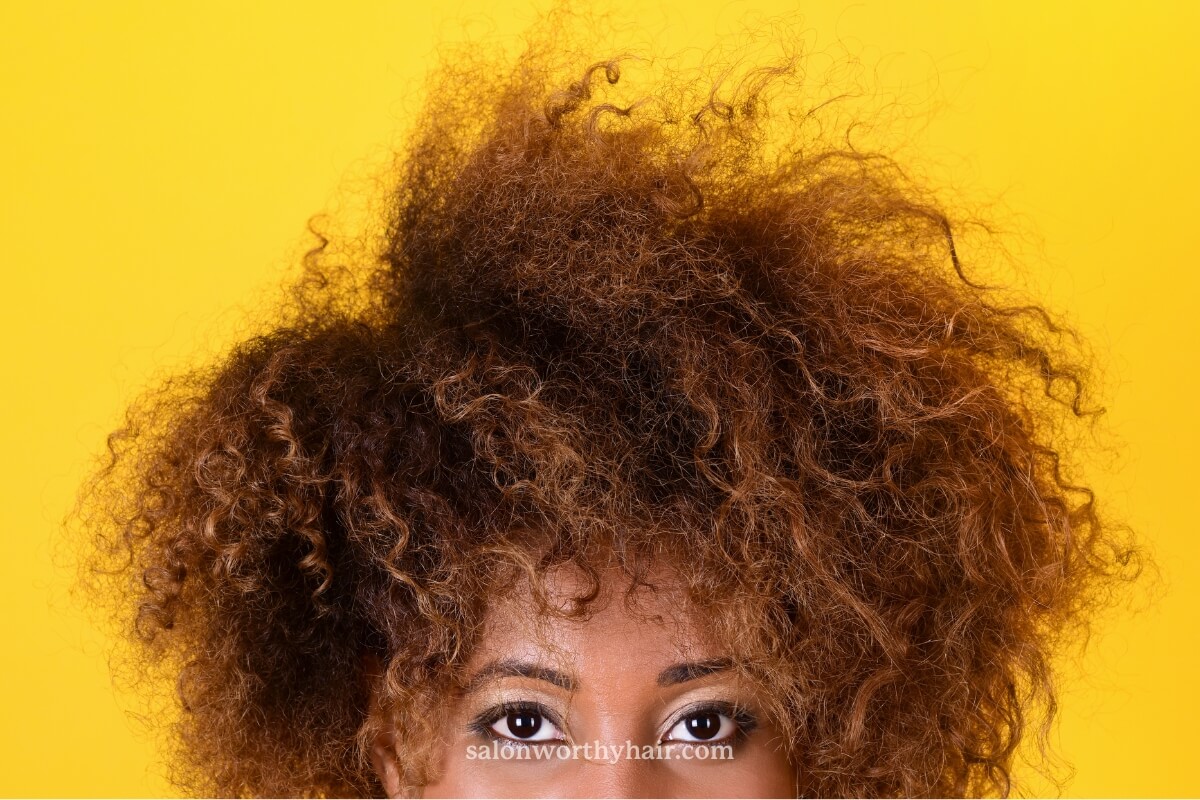
Frizz-prone hair is hair that tends to frizz. This natural inclination to frizz promotes a higher potential for developing fuzzy and irregular texture, tangles, and unruly appearance compared to smooth and frizz-resistant hair.
Frizz occurs when the hair’s cuticle layer doesn’t lie flat and smooth. The cuticle layer, which is the hair shaft’s outer protective barrier, protects the inner structures of the hair (the cortex and medulla) and regulates the passage of moisture.
When the cuticle layer lifts away from the hair shaft, the hair’s exterior becomes uneven and rough, dotted with open gaps. As a result, the elevated cuticles allow moisture to escape or penetrate freely, causing the hair strand to shrink or swell, depending on its internal moisture. Such shape distortion encourages hair strands to tangle with each other, resulting in unruly, unmanageable hair.
Hair with a propensity for frizziness often shares common characteristics, which can stem from inborn traits, hair health, damage, general wear and tear, aging, or reactions to external environmental factors.
Here’s a list of the characteristics of frizz-prone hair:
- Irregular structure and shape of the hair shaft,
- The hair shaft is too thin,
- The hair feels coarse and rough,
- Tight curl patterns,
- Hair damage,
- Split ends,
- High porosity,
- Sensitivity to humid weather conditions,
- Bad hair care routine,
- Aging hair,
- The individual suffering from hormonal imbalances,
- Poor diet reflecting on the hair’s health,
- And bad lifestyle habits affecting the hair.
And here is a list of hair types that are most vulnerable to frizziness:
- Curly hair: Type 3c and type 4 hair have tight coil shapes that cause more friction and entanglement between strands.
- Kinky hair: Tightly coiled afro-textured hair where the sharp angles of the coils allow for more tangles.
- Fine or thin hair: The diameter of each strand is smaller, and the cuticle layers are more loosely packed and vulnerable.
Besides the inherent traits, external factors can also make the hair more sensitive to frizz.
For example:
- Damaged hair with compromised cuticles from chemical treatments, heat styling, weathering, or other environmental factors.
- Porous hair: Hair with high porosity that cannot retain adequate moisture due to gaps in the cuticle from damage.
Hair that tends to frizz often resists conformity and exhibits disobedience to order and discipline, with strands defiantly splaying outwards rather than aligning to a sleek and cohesive shape.
While it’s impossible to tame frizzy hair permanently, the right treatments can help mitigate it and keep the frizz under control.
But before looking into treatments, it is essential to fully understand whether your hair’s tendency to frizz is due to inborn traits, health, physical condition, hair care routine, lifestyle, or climatic factors.
To help you, here are the explanations on why some hair types are more prone to frizz than others:
Irregular Structure and Shape of the Hair Shaft
Hair shafts with irregular, non-uniform shapes with multiple ridges and grooves tend to be more frizz-prone because they do not align smoothly against one another. Their uneven surface can cause the hair strands to snag, intertwine, and tangle, making them more susceptible to frizz.
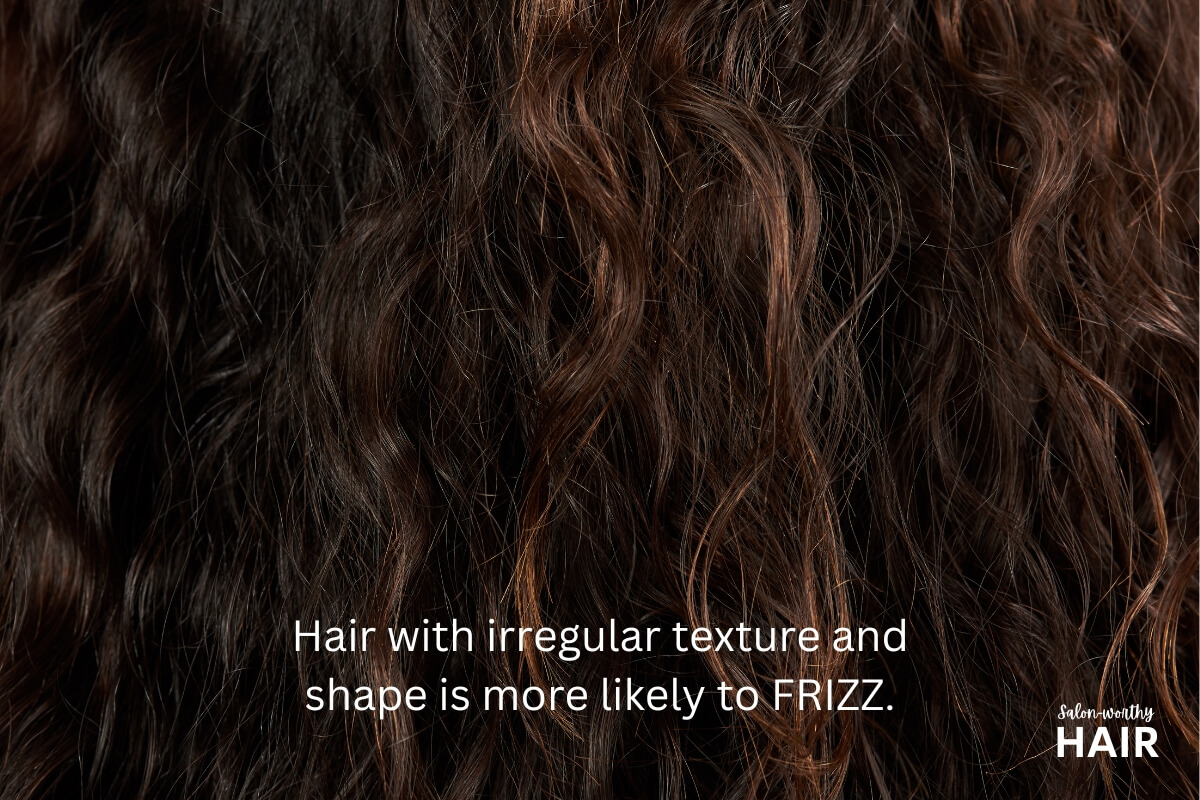
For example, tightly coiled curl patterns with sharp zig-zag bends inherently have more bending points where hairs intersect and weave together. The sharper the angles of the coils, the more chances the strands have to catch and rub the cuticles the wrong way.
In contrast, straight hair has round shafts and smooth edges. The smoothness and uniformity allow them to glide past each other without snagging.
The Hair Is Too Thin
Thick hair is less prone to frizz than thin hair because it has more cuticle layers that protect the hair shaft and keep moisture locked in.
Thinner hair shafts have fewer cuticle cell layers covering the strand. With less structural support and coverage, these cuticles are more likely to lift away from the hair shaft and develop a frizzy texture.

When thinner hair shafts rub against each other, there is more direct contact between the cuticle edges. This close interaction can scrape and lift the cuticles more easily than in thicker hair, where more cuticle cells, due to the larger diameter, provide more cushion and protection to the hair fiber.
Thicker hair shafts have more layers of cuticle cells overlapping and protecting the strand. This tighter, denser cuticle packaging helps the hair shaft maintain a smooth outer surface to minimize frizz.
Thicker hair shafts also benefit from bigger breadth and girth. They also have more binding lipids like fatty acids and ceramides that help “glue” the cuticles to the hair shaft, making the outer layer of the hair smoother with a better texture. Thinner hair often lacks these binding compounds, allowing the cuticles to separate more easily.
Coarse and Rough Hair Texture
Hair textures that are coarse and rough on the outside are more vulnerable to cuticle lifting, tangling, and moisture imbalance, which inclines the hair to frizz.
Hair texture relates to the strands’ thickness, curl pattern, surface feel, and porosity. Hair texture also defines whether the hair is fine, medium, or coarse in terms of thickness and diameter. When the surface texture and feel of the hair strands are rough, coarse, and irregularly shaped, the hair strands create more friction between each other. The increased friction lifts the cuticles when the strands interact. Smoother shafts, in contrast, glide by each other without rubbing or snagging.
Tight Curl Patterns
Tighter curl patterns inherently lend themselves to more frizz due to more bending points that create tangles, friction, disrupted clumping, and difficulty in distributing the scalp’s natural oil (sebum).
Hair with more bending points, like type 4c hair, has more places where strands intersect and rub against each other, creating friction that can lift cuticles. As a result, the coils are more likely to wrap around and knot with neighboring strands. This entanglement causes abrasion between hairs.
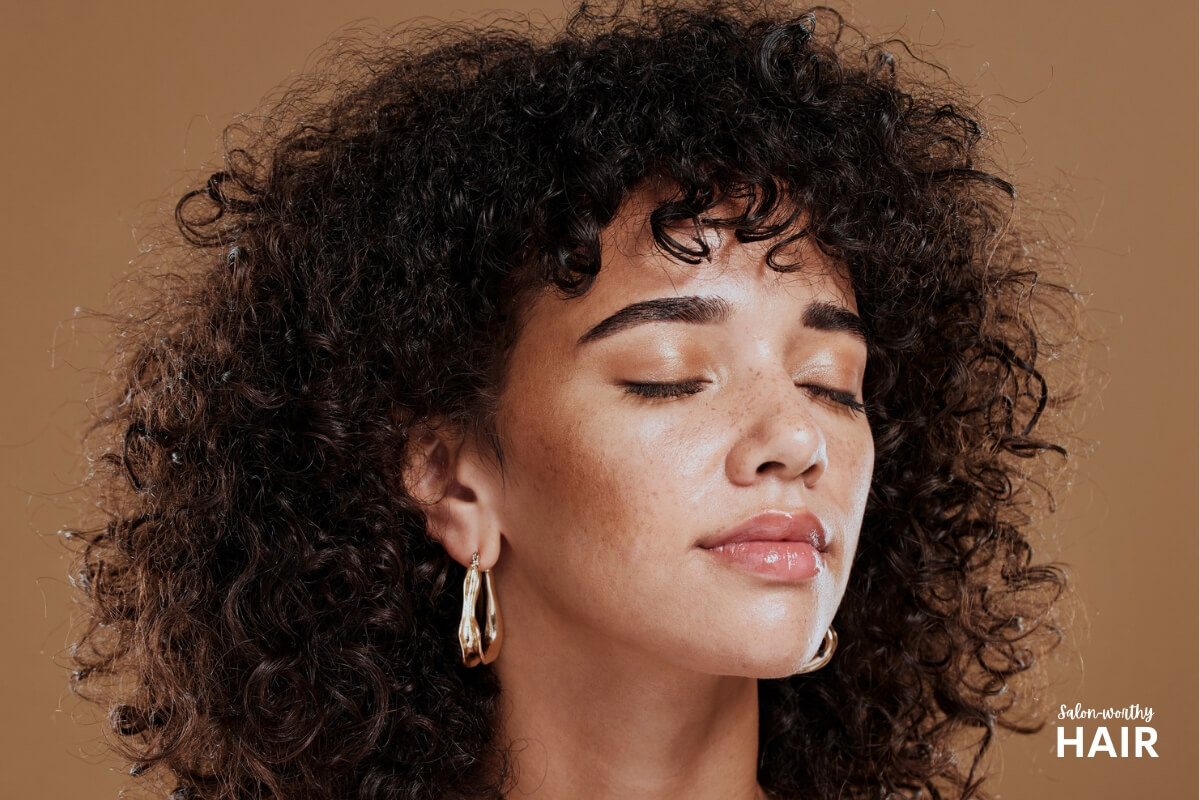
The inherent twisting and rubbing of tight curls increase their vulnerability to cuticle damage over time. Very tight curls may not adhere smoothly into curl clumps, leaving stray frizzy strands sticking out.
The tight kinks and coils also make it harder for the scalp’s natural oil (sebum) to adequately spread down the hair shaft, resulting in dryness. The lack of natural moisture makes tight curls absorb ambient moisture more readily, leading to temporary swelling and cuticle lifting.
Damaged Hair
Damaged hair with compromised lipid barriers, altered textures, and weakened structural integrity is more susceptible to cuticle lifting and moisture imbalance that directly generates frizz.
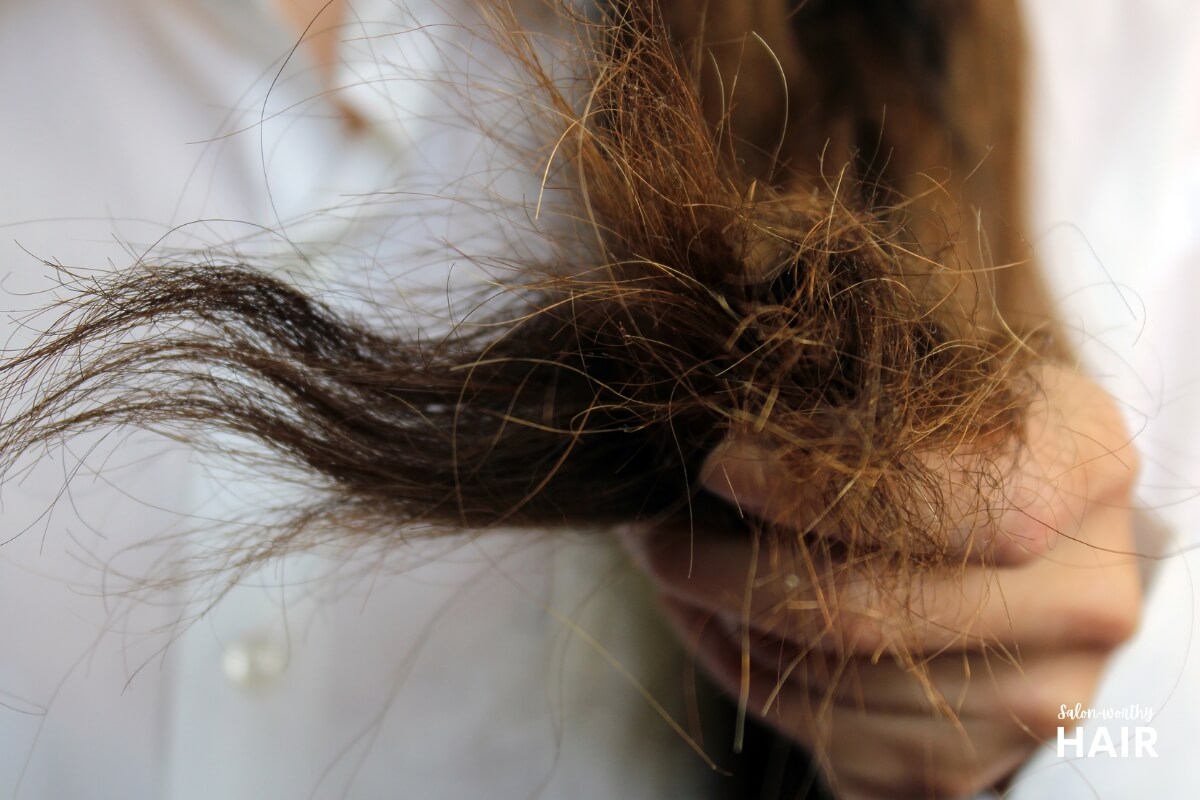
Hair undergoes cumulative damage over time from exposure to chemical treatments, heat styling tools, and environmental factors like sun and pollution. This damage alters the hair structure, weakening the strands with a higher potential to frizz.
Processes like perms, relaxers, bleaching, and repeated heat styling degrade the cuticle layers that protect the hair. Cuticles become ragged and uneven and start to peel away from the hair shaft. The raised cuticle layer is the primary culprit behind frizzy, flyaway hair.
When damaged, hair loses essential lipids like ceramides and fatty acids that “glue” the cuticles, making them more prone to peeling off.
On a deeper level, structural damage to the hair causes uneven porosity by creating gaps and holes throughout the hair’s cuticle layers.
Excessive Split Ends
The frayed, splintered nature of split ends creates uneven ends that stick out in different directions and entangle with other hairs, making the hair more likely to frizz.
Split ends are a major instigator of frizz due to the irreparable damage they cause to the hair structure. When hair ends become split and frayed from breakage, the cuticles peel back and shear away from each other. The splits can propagate upward cuticle lifting as the splits travel up the hair shaft over time.
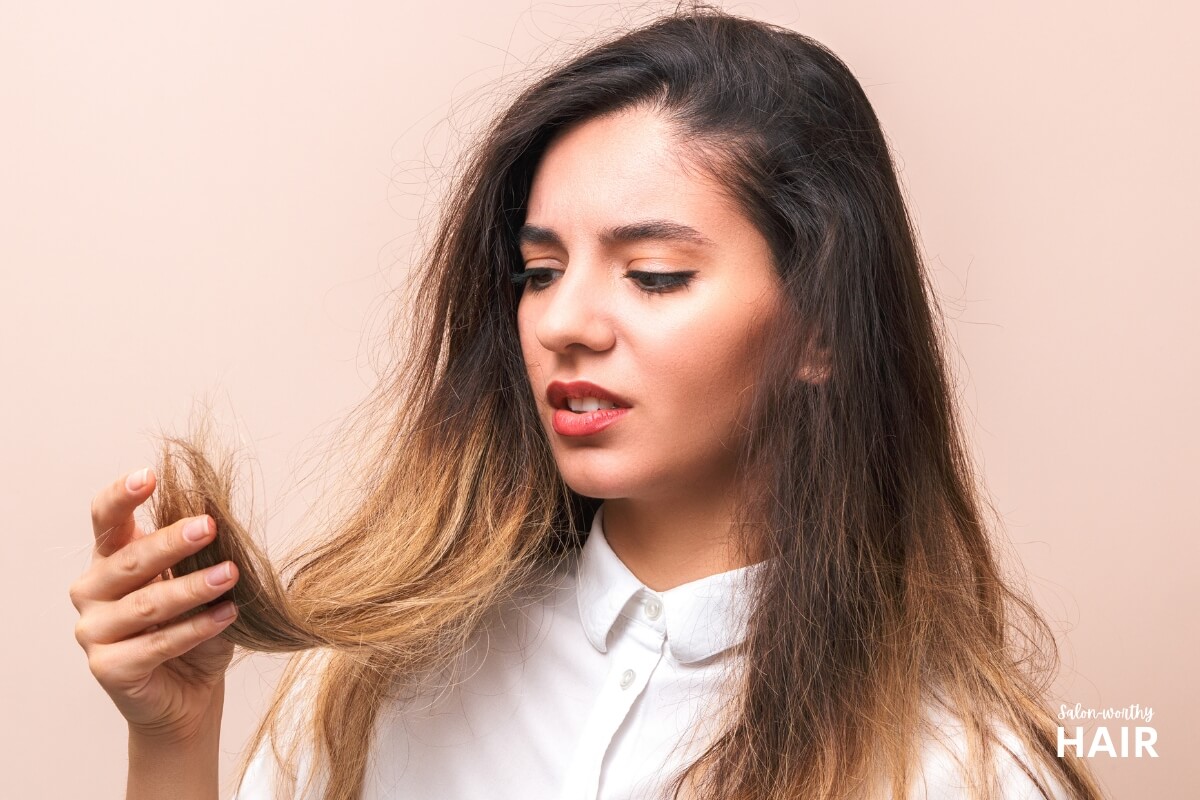
Split ends create weak spots along the hair length that are easily broken and lifted when the hair moves. Additionally, the irregular strands stick out in various directions rather than laying flush, leading to entanglements with neighboring hairs.
The roughness of the exposed cuticle edges on the fraying ends prevents them from smoothly gliding past each other, reducing elasticity. Furthermore, the flyaway shreds disrupt the sleek surface of the hair, creating frizzy strands around the ends.
Snagging and catching split ends on fabrics, brushes, and combs tugs the fragile ends sharply, causing more splits and cuticle disturbance up the shaft. Overall, the inherent fragility and irregularity of split, frayed ends make hair far more vulnerable to cuticle lifting, which makes hair prone to frizziness.
High Porosity
Porous hair encourages cuticle swelling, uneven moisture uptake, and weakness, making the hair sensitive to frizz.
High porosity hair is predisposed to frizz due to the gaps, cracks, and openings along the hair cuticle layer caused by damage over time. These irregularities create excessive pathways for moisture to rapidly enter and exit the strands.
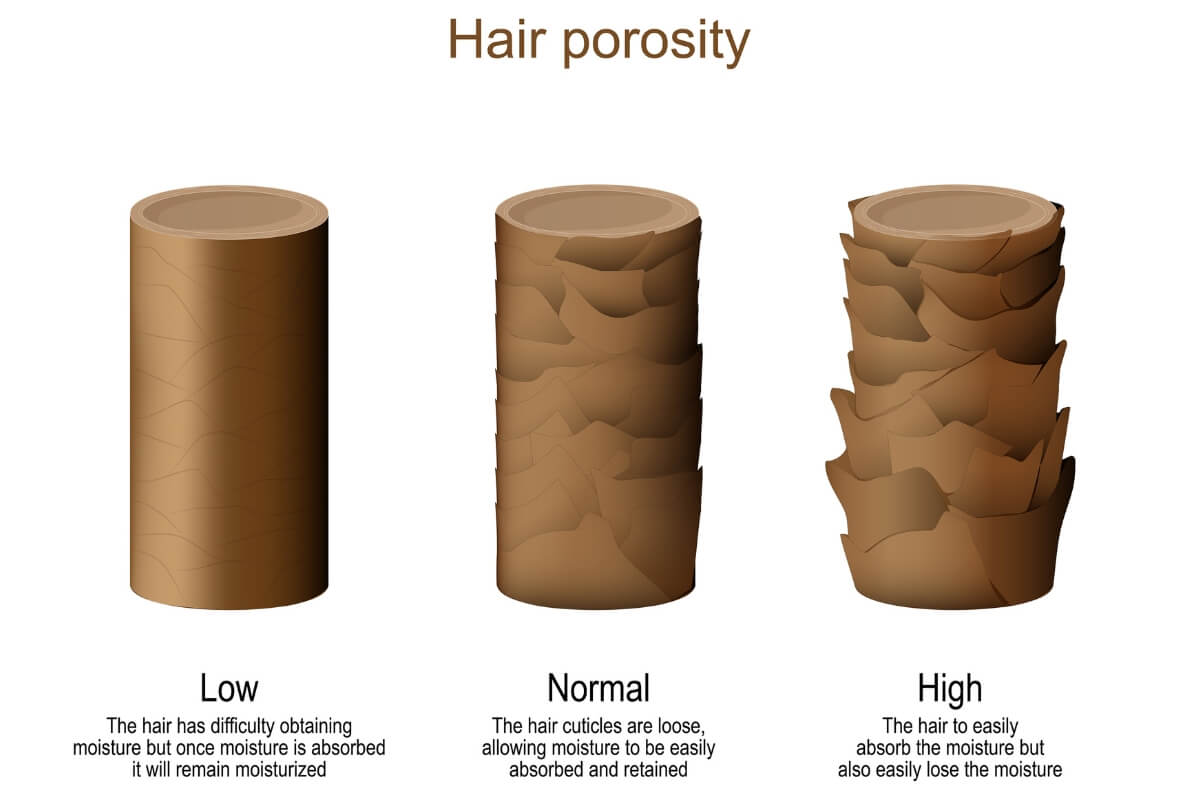
This inability to effectively retain moisture leaves high porosity hair chronically dehydrated and brittle. However, the overabundance of entry points also enables the hair to take on too much water too quickly when wet, leading to cuticle swelling and lifting.
Additionally, uneven porosity means different sections of hair absorb and release moisture at different rates. This imbalance results in some strands becoming overly swollen and frizzy while others remain parched and dry.
Frequent wetting and drying cycles exacerbate these issues through a phenomenon called hygral fatigue, causing exaggerated expansion and contraction of the strands that worsen frizz over time.
Sensitivity to Weather Effects and Humidity
Hair types that are naturally thirsty, porous, or sensitive to moisture are most vulnerable to high humidity’s frizz-inducing effects. The excess moisture in the air causes temporary changes to the hair structure that lift cuticles and disrupt its natural formation and pattern.
The hair types most prone to frizz in humid weather conditions are:
- Curly Hair: Tight curls and coils tend to absorb ambient moisture from the air when humidity is high. The oppressive moisture causes temporary swelling of the hair shaft and lifting of the cuticles, resulting in frizz.
- Porous Hair: Hair that is damaged or has irregular porosity due to gaps in the cuticle layers is vulnerable to taking on too much moisture from the air. The excessive moisture uptake leads to puffiness and frizz.
- Fine Hair: Thin, low-density hair with fewer cuticle layers holding strands together is more susceptible to the swelling effects of moisture absorption from humidity. The cuticles lift and separate more easily.
- African Textured Hair: Very kinky, coily hair types like 3C and 4C curls are especially reactive to moisture in the air. The dense coils swell rapidly in humid conditions, disrupting curl patterns and clumping.
- Overly Dry Hair: Extremely dehydrated hair that lacks moisture balance will absorb humidity aggressively, leading to expansion, lifting of cuticles, and loss of sleekness.
Keeping hair consistently hydrated with moisturizing shampoos, conditioners, masks, and leave-ins is essential for hair types that are prone to frizziness. To do so, a good hair care routine must be followed consistently.
Bad Hair Care Routine
A haircare routine lacking moisturizing, gentle handling, detangling, and protective steps can make the hair prone to frizz.
For example, when the hair lacks proper moisture, it swells unevenly whenever moisture is introduced. Similarly, overuse of harsh, sulfate-heavy shampoos strips the hair’s natural oils and lipids that seal down the cuticles.
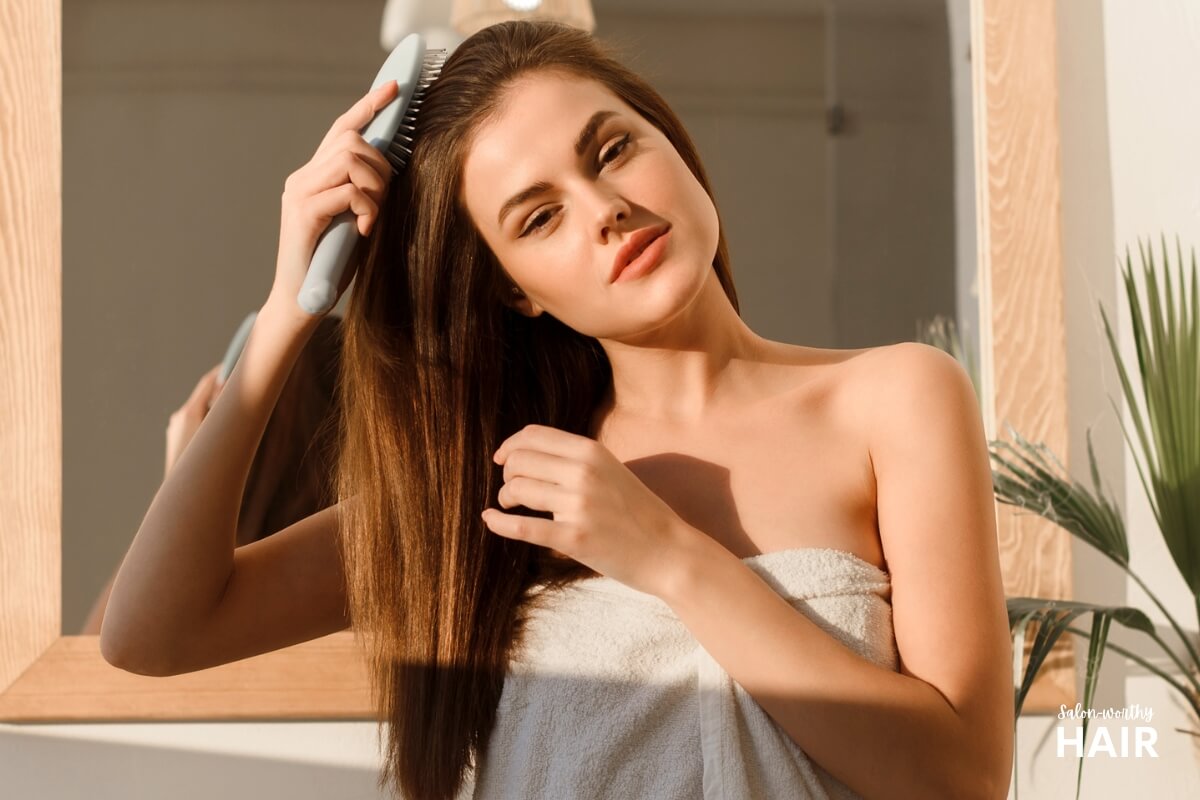
Excessive shampooing disrupts the cuticle layers before they can smooth back onto the hair shaft following cleansing. Even something as simple as rough drying with towels can cause cuticles to catch, lift, and separate from the shaft.
Repeated use of hot styling tools without heat protection can degrade the cuticle structure over time, preventing cuticles from lying flat and allowing frizz to develop. Improper detangling can tug and rupture cuticles from the wrong brush or combing hair when dry.
Lack of adequate UV and heat protection makes hair more prone to damage that compromises the cuticle layer. And rough, absorbent fabrics create overnight friction that roughens up the cuticles.
To make it worse, our hair quality degrades as we age, and various health factors also kick in to make the hair more likely to frizz.
Natural Aging
Natural aging changes hair condition and quality, leaving strands more prone to swelling, breakage, dryness, and cuticle damage that causes frizz.
Aging hair loses its natural elasticity and flexing ability without breaking over time. This lack of flexibility leads to increased brittleness, that makes the hair more likely to frizz.
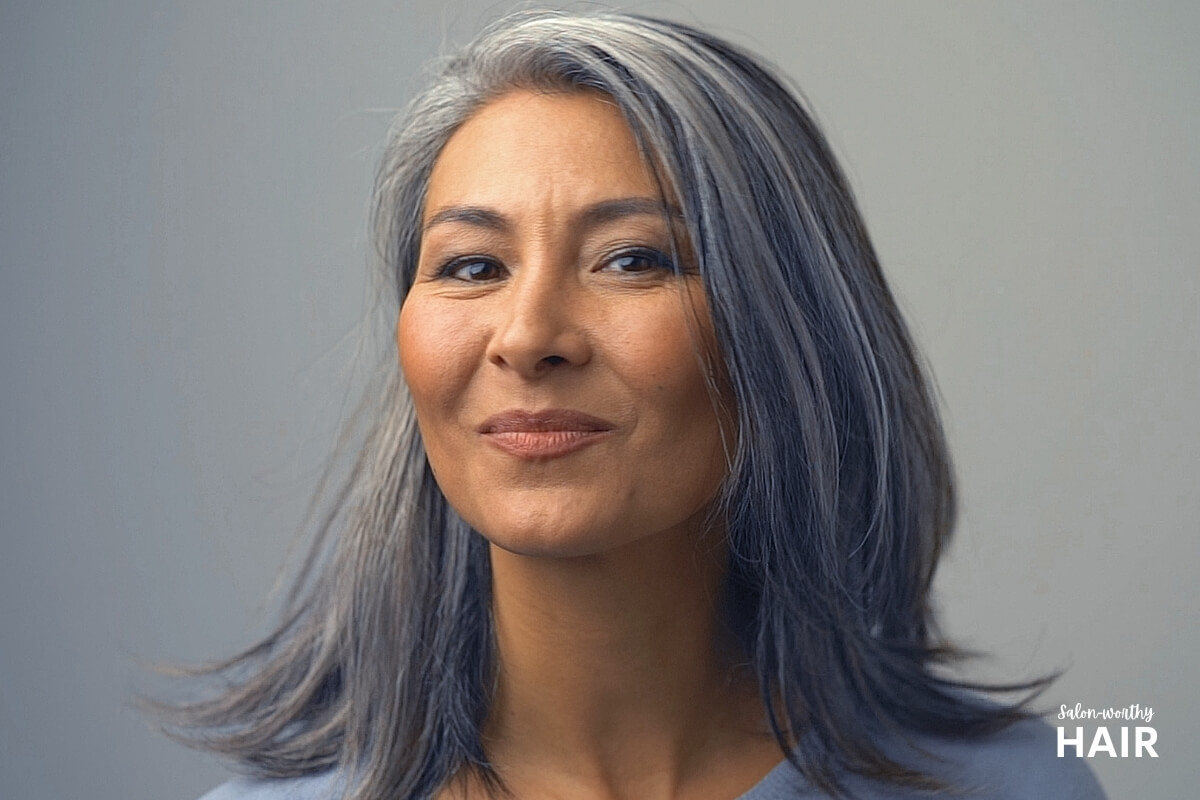
Over decades, hair also endures more cumulative damage from chemical treatments, heat styling, UV exposure, and other factors. This long-term exposure degrades the cuticle structure. Further environmental damage like pollutants, hard water minerals, and buildup leave hair rough and dull in texture.
Thinning density is also common with age, as some natural hair loss occurs. This sparser coverage reveals more flyaway strands. Nutritional deficits from restricted diets and reduced nutrient absorption as we age further deprive the hair of vital nutrients like fatty acids, amino acids, and vitamins.
Age-related scalp changes like dryness, sensitivity, and slowed cell turnover create an environment that impairs follicle moisture delivery, leading to dehydration.Ultimately, hormonal fluctuations and declines that occur with aging cause the hair shaft to become drier, thinner, and more porous, making the hair more prone to frizziness.
Hormonal Imbalances
Hormonal abnormalities affect hair follicle development, oil secretion, structural integrity, and texture of the hair, making the hair structurally weak and prone to frizz.
At the root level, hormones regulate the hair follicle production and activity that determines each strand’s thickness, strength, and integrity. For example, androgens like testosterone promote robust, healthy hair, while estrogen decline is linked to thinning and shedding.
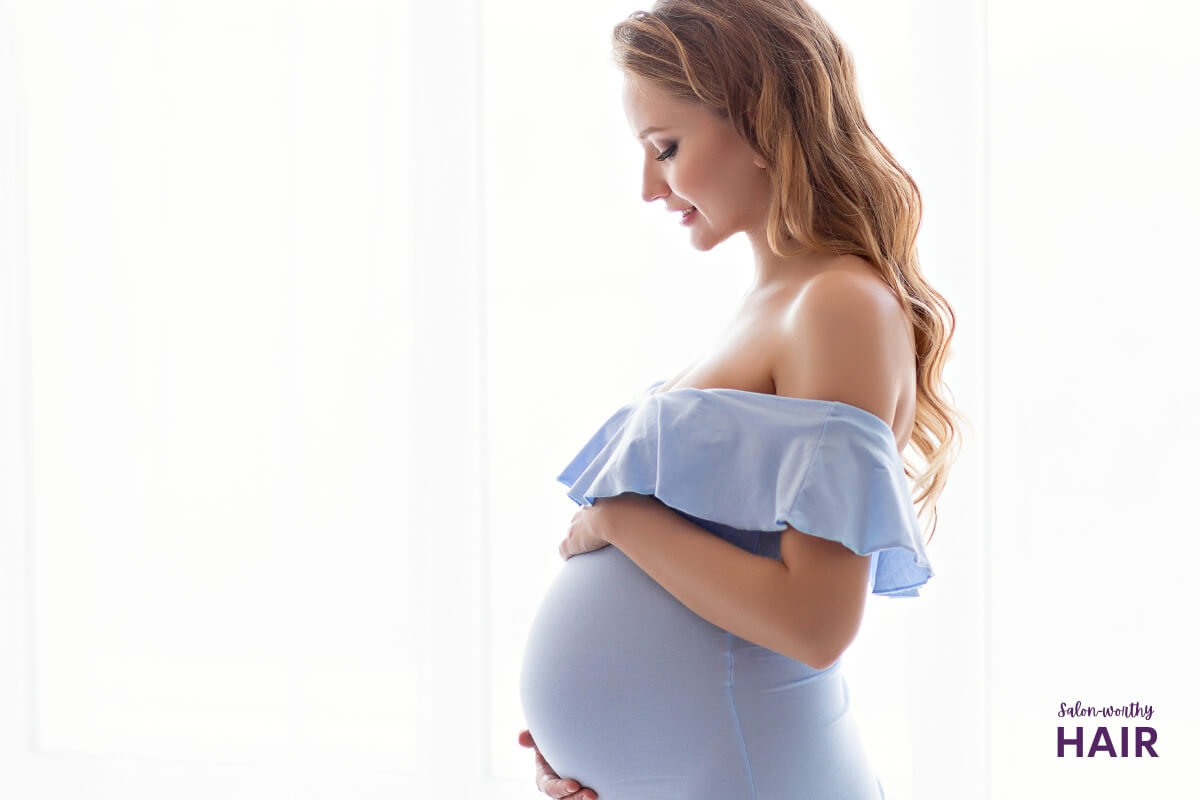
Hormones’ imbalances like during menopause, pregnancy, or related causes can disrupt the normal hair production cycle and growth rhythms, often weakening the hair strands. When introduced to moisture or friction, this makes hair more prone to swelling, breakage, and cuticle lifting.
Specific hormones also impact the oil production and hydration of hair. Excess androgens ramp up sebum secretion, making oilier but smoother strands less prone to frizz. Low thyroid hormone slows scalp oil output, leaving hair parched and thirsty.
Hair keratin and protein content rely on optimal hormonal activity as well. Any hormone-fueled deficits in amino acids weaken the hair shaft.
Poor Diet
A poor diet can make hair more vulnerable to breakage, dehydration, and cuticle disruption, substantially elevating frizz due to a lack of nutrients, vitamins, amino acids, keratin, essential fatty acids, and hydration.
Hair comprises protein chains that require adequate dietary protein to remain strong and intact. Lack of amino acids from low protein makes hair more brittle and prone to swelling when it absorbs moisture. The swelling lifts the cuticles and creates frizz.

Deficiencies in vitamins and minerals also degrade hair quality. Inadequate iron leads to low ferritin levels that minimize sebum, drying out the hair. Low zinc impairs DNA and protein synthesis critical for hair formation. Lack of B vitamins like biotin and niacin slow growth and thin out strands.
Essential fatty acids from fish, nuts, and seeds are needed to produce the lipids and ceramides that seal down cuticles and prevent frizz. Dietary deficiency in these healthy fats causes cuticles to lift and separate more easily.Finally, poor hydration from insufficient water intake or excess diuretics like caffeine leaves hair unable to retain adequate moisture, leading it to absorb unevenly and create frizz.Frizzy hair can also result from poor lifestyle habits.
Poor Lifestyle Habits
Poor lifestyle habits like lack of sleep, smoking, drinking alcohol, and high sugar intake can create inflammation, hormone imbalance, nutritional deficits, and hydration issues that negatively impact hair health and make it preconditioned to frizz.
Inadequate sleep and high stress raise cortisol levels that can prematurely shift hair from the growing phase to the shedding phase. This leaves new strands with a weakened structure. Sleep deprivation also impairs nutrient absorption needed for healthy hair.
Smoking constricts blood vessels, including those feeding the scalp and follicles. This restricts nutrient supply to hair and generates free radicals that damage hair protein structures.
Excess alcohol impacts liver function, interfering with nutrient assimilation and hormone balance. Liver issues lead to hair-supporting vitamins like B12, folate, and zinc deficiencies.
Dehydration from sugary, caffeinated, and alcoholic beverages creates systemic dryness, including parched hair cuticles that lift away from strands.
Which Hair Types Are More Prone to Frizz?
Hair types with tight curl patterns or thinner hair tend to frizz more easily, while thick, straight hair is less prone to frizz.
Curly and coily hair types are more prone to frizz because the curl pattern creates more opportunities for strands to separate and frizz, especially in humid conditions. The texture of curly hair also tends to be drier and more porous.
Straight, fine hair is very prone to frizz as it lacks the density to keep strands aligned, and the cuticle layers are fewer, making the hair more porous to absorb moisture.
How to Fix Frizz-Prone Hair?
To fix frizz-prone hair, a consistent hair care routine that focuses on always protecting and sealing the hair cuticle while keeping the hair hydrated is essential.
For best results, look for anti-frizz treatments and products like keratin treatments, Olaplex treatments, and products like sulfate-free moisturizing shampoos, hydrating conditioners, and deep-conditioning hair masks.
What Are the Best Treatments for Frizz Prone Hair?
Long-term anti-frizz treatments like keratin, Olaplex, rebonding, hot oil treatments, deep conditioning, and Glycerin treatments can smooth frizzy hair and keep it under control for a few months.
To find out more, click on the link below:
Best treatments for frizz-prone hair.Managing Frizz-Prone Hair Requires Consistency
Frizz-prone hair is hair that tends to have an irregular structure and shape. It may be overly fine, thin, or have tight curl patterns that cause more friction and tangles between strands.
Other than genetic traits, external damage from chemicals, heat, and mechanical forces can also degrade the hair’s cuticle structure leading to increased porosity and moisture imbalance. Lifestyle factors like poor nutrition, hormonal changes, and bad hair care routines can also affect the hair’s integrity. Ultimately, what makes hair prone to frizz is some combination of its intrinsic thickness or curl pattern, accumulated cuticle damage that increases porosity, and daily habits that introduce more friction and affect its moisture retention.
While curly, kinky, or thin hair may be more predisposed, the health of frizz-prone hair’s cuticle and how well it protects from swelling and moisture loss is most influential.
Managing frizz-prone hair through gentle handling, hydrating products, and protective styles can help minimize its tendency to frizz. But you have to be consistent because finding a long-term cure is almost impossible when your hair is naturally predisposed to becoming frizzy.
About the Author
 Camelia Smith
Camelia SmithCamelia Smith can color hair, perform keratin treatments, bleach hair, and even cut curly hair. She is our go-to person whenever we have hair treatments and styling questions.
She's also currently training as a freelance makeup artist and is passionate about helping others feel beautiful in their skin. When she's not writing or doing hair, she's usually spending time watching British period dramas.